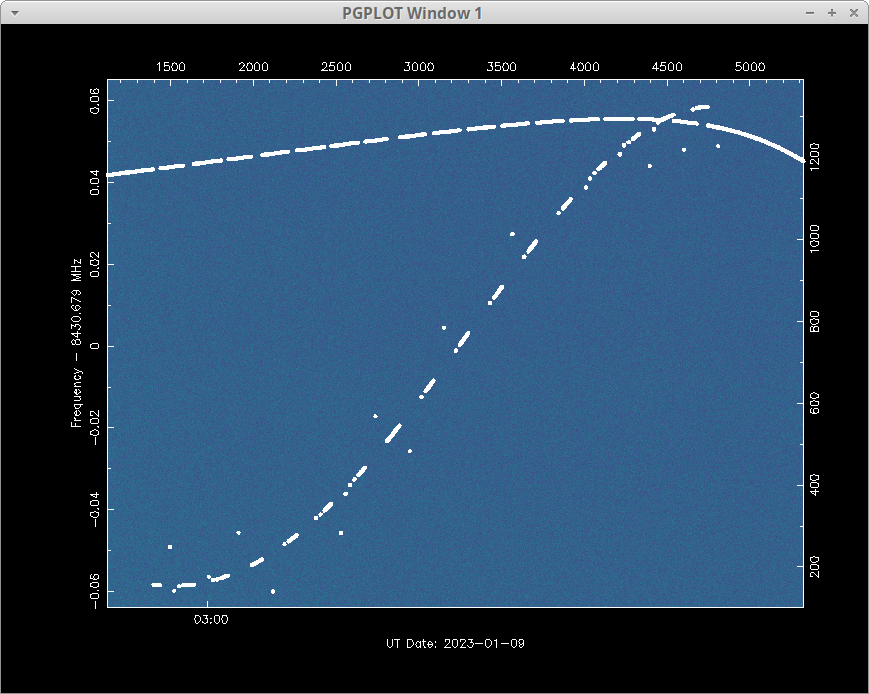
#TIANWEN1 orbit remains unchanged based on period measurements.
T=25482s,
a=8898km. So no aerobrake test yet.
Neuquén ground station apparently attempted to lock to the spacecraft last night and failed. News reports of orbiter having communications issues. 🧵⬇️

T=25482s,
a=8898km. So no aerobrake test yet.
Neuquén ground station apparently attempted to lock to the spacecraft last night and failed. News reports of orbiter having communications issues. 🧵⬇️


This zoomed in Doppler plot of #TIANWEN1's signal during the anomalous lock attempt from yesterday is depicted below. Neuquén ground station appears to be using uplink Doppler compensation but is out of sync with the actual orbit of the spacecraft. ⬇️ 

Uplink Doppler compensation (UDC) is used by a ground station to place the uplinked signal at the spacecraft at a constant signal. It does this by 'ramping' the signal it transmits to match the 1-way Doppler to the spacecraft. ⬇️
https://twitter.com/nascom1/status/1598529266815160321
During the #TIANWEN1 periareion part of the pass the Doppler changes rapidly and if you wanted to be in lock say to measure range accurately while skimming the Martian atmosphere you run the risk of drifting out the of the spacecraft rx passband. UDC solves this. ⬇️
Normally #TIANWEN1 hasn't been observed to use UDC but they may need it to do the aerobraking test. However, with reports of communications issues this may be challenging the mission controllers. 🛑
spacenews.com/chinas-tianwen…
spacenews.com/chinas-tianwen…
• • •
Missing some Tweet in this thread? You can try to
force a refresh














